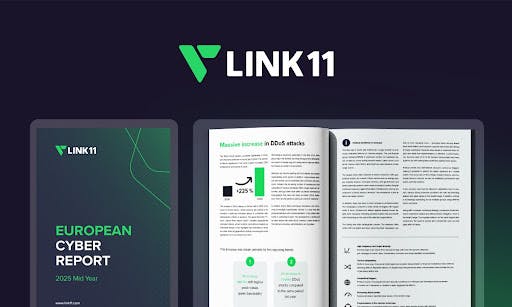“Data-driven” has become a badge of honor in modern marketing and product development. Dashboards are filled with charts, click-through rates, heatmaps, and A/B results. But in the rush to optimize what we can measure, many brands have lost sight of what they can’t: emotion, hesitation, intent, and trust.
In an age when customer behavior evolves by the hour, decisions made purely on metrics are often misguided. Numbers reveal what happened but not why. And in the gap between those two realities lies some of the most valuable insight a business can find.
What the Dashboards Miss
There’s a dangerous assumption that if something performs well numerically, it must be working holistically. But history has shown that data can deceive. High-performing pages in terms of clicks or engagement may still underdeliver in conversion, brand perception, or loyalty, not because they’re poorly designed but because they miss the emotional mark.
Take
Similarly,
These are reminders that even when the numbers look good on paper, emotional disconnects can undermine the entire experience.
Quantitative testing methods, like A/B testing, were never built to capture how a user feels when navigating a product page. They can’t tell when a shopper pauses before clicking “buy” or when an image triggers confusion, not confidence. These nuances don’t show up in analytics tools, but they influence behavior the same way.
The Human Layer: Where Emotion Shapes Action
Today’s most influential customers, especially Gen Z and mobile-first users, tend to make fast, emotionally driven choices. They respond instantly and intuitively to how a brand makes them feel. These emotional impressions form in seconds and often outweigh rational evaluation. A perfectly structured product page can still fall flat if it lacks authenticity, relatability, or emotional resonance—because what feels right often matters more than what looks right.
In mobile-first environments, users often decide within milliseconds whether a brand experience feels intuitive or off. Micro-interactions, like hover hesitation, scroll speed, or a quick swipe away, offer valuable signals about trust and clarity yet rarely surface in traditional analytics dashboards.
Emotion may be irrational, but it’s far from random. It reveals itself in the flicker of a facial expression, a pause in a voice response, or the way a user scrolls—slowly, quickly, or not at all—through a carousel of images. These subtle cues often guide decision-making, yet they’re exactly what most analytics tools fail to capture.
Tools Bridging the Gap
A new generation of platforms is stepping in to close this gap—tools designed to bring emotional intelligence into the optimization process. Instead of relying on metrics alone, they blend qualitative feedback, behavioral signals, and AI to reveal what users are actually experiencing in real time.
- ProductPinion helps brands gather real-time video reactions from shoppers. The system decodes emotional patterns and reveals why certain visuals or copy elements resonate (or don’t).
- Trymata focuses on usability testing, capturing how users behave while completing tasks and recording their voice feedback as they do.
- UserTesting scales human feedback by connecting brands with real people who narrate their thoughts while interacting with digital experiences.
- Creovai focuses on real-time and post-call intelligence by analyzing every customer conversation, tracking sentiment, friction, and tone to guide support teams and improve customer experience at scale.
These tools enhance traditional analytics rather than replace them. They capture the emotional context and behavioral nuance that data alone often misses.
Why Real Feedback Feeds Statistical Significance
One of the core problems with traditional feedback systems like post-call NPS and CSAT surveys is their participation rate. According to
This isn’t just a data issue. It’s a misalignment with reality. When businesses rely heavily on skewed feedback, they end up shaping strategies around edge cases rather than the true center of customer sentiment. And even when testing isn’t biased, it’s often too slow to catch up. Traditional A/B testing requires time, traffic, and statistically significant results to act. But in fast-moving digital environments, waiting for confidence intervals often means missing the response window.
Traditional surveys also lack meaningful context. Creovai’s research suggests that only about 20% of respondents leave open-text comments to explain their scores. That means most customer input boils down to a single digit—useful for trend spotting but useless for problem-solving. It’s the difference between spotting smoke and finding the fire.
That’s where human feedback becomes invaluable. Data alone often delivers broad or ambiguous patterns. But real shopper feedback offers precision—and context. With behavior-driven platforms, brands can hear how customers express hesitation, trust, or objection in their own words and tone. That emotional clarity is nearly impossible to replicate through dashboards alone.
While data shows trends, real user opinions reveal the triggers behind them. Numbers might tell you a page has a high drop-off rate, but it takes a human voice to explain that the call-to-action felt too pushy or that the imagery lacked credibility. In a world of instant reactions and emotionally charged decision-making, understanding what people think isn’t just a nice-to-have—it’s how brands stay relevant.
As Andri Sadlak, founder of ProductPinion, puts it:
“Data tells you what happened. But real consumer reactions tell you why it happened. That emotional layer—the pause before a scroll, the hesitation in a voice, the face that lights up at a product image—can never be captured in a spreadsheet. With ProductPinion, we built a system that decodes emotional behavior at scale because optimization without empathy is optimization in the dark.”
Many teams are turning to AI to overcome these blind spots, as it clarifies complex, emotional user behavior.
What AI Actually Brings to Testing
AI’s real value in this space is not automation—it’s amplification. It helps extract deeper meaning from feedback faster and at scale. Modern behavior-driven platforms use AI to:
- Aggregate and process large-scale feedback from video recordings, survey transcripts, voice inputs, and interaction logs.
- Detect emotional and behavioral patterns across user segments, identifying repeated moments of hesitation, frustration, or delight.
- Prioritize what matters most by weighing user reactions by frequency and emotional impact or proximity to key conversion steps.
- Translate findings into actionable design changes, messaging shifts, or UX refinements—sometimes within the same sprint.
With these new possibilities, companies can expand the scope of their testing. With AI, teams can assess which image performs better and why users trust one message over another. They can also test text length, color, emotional tone, and perceived authenticity.
Importantly, this kind of testing goes beyond surface metrics. AI allows brands to optimize for trust, relatability, and emotional resonance—all of which are difficult to measure with clicks alone. It enables iterative, empathy-driven development without sacrificing speed or scale.
When used correctly, AI doesn’t replace human insight. It sharpens it.
Rethinking Data-Driven
The problem isn’t outdated feedback methods but the illusion that more data equals deeper understanding. Being data-driven isn’t a flaw, but it becomes one when it replaces human experience instead of enhancing it. The future of optimization lies in blending the precision of data with the power of empathy.
Platforms like ProductPinion, Trymata, and UserTesting are helping brands shift from measuring performance to interpreting behavior. The next wave of competitive advantage won’t come from tracking what people click but from uncovering the emotions and intent behind each action.
Future-leading brands will move beyond behavior analysis to truly grasp what drives decisions. They’ll combine data with empathy, dashboards with dialogue, and optimization with intuition. Because, in the end, what customers remember most is the impression your product left on them.










